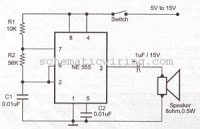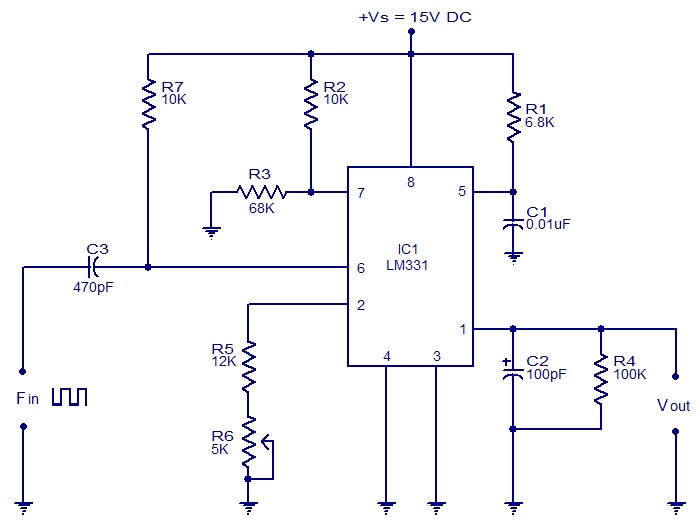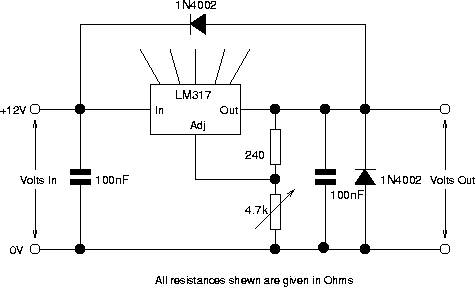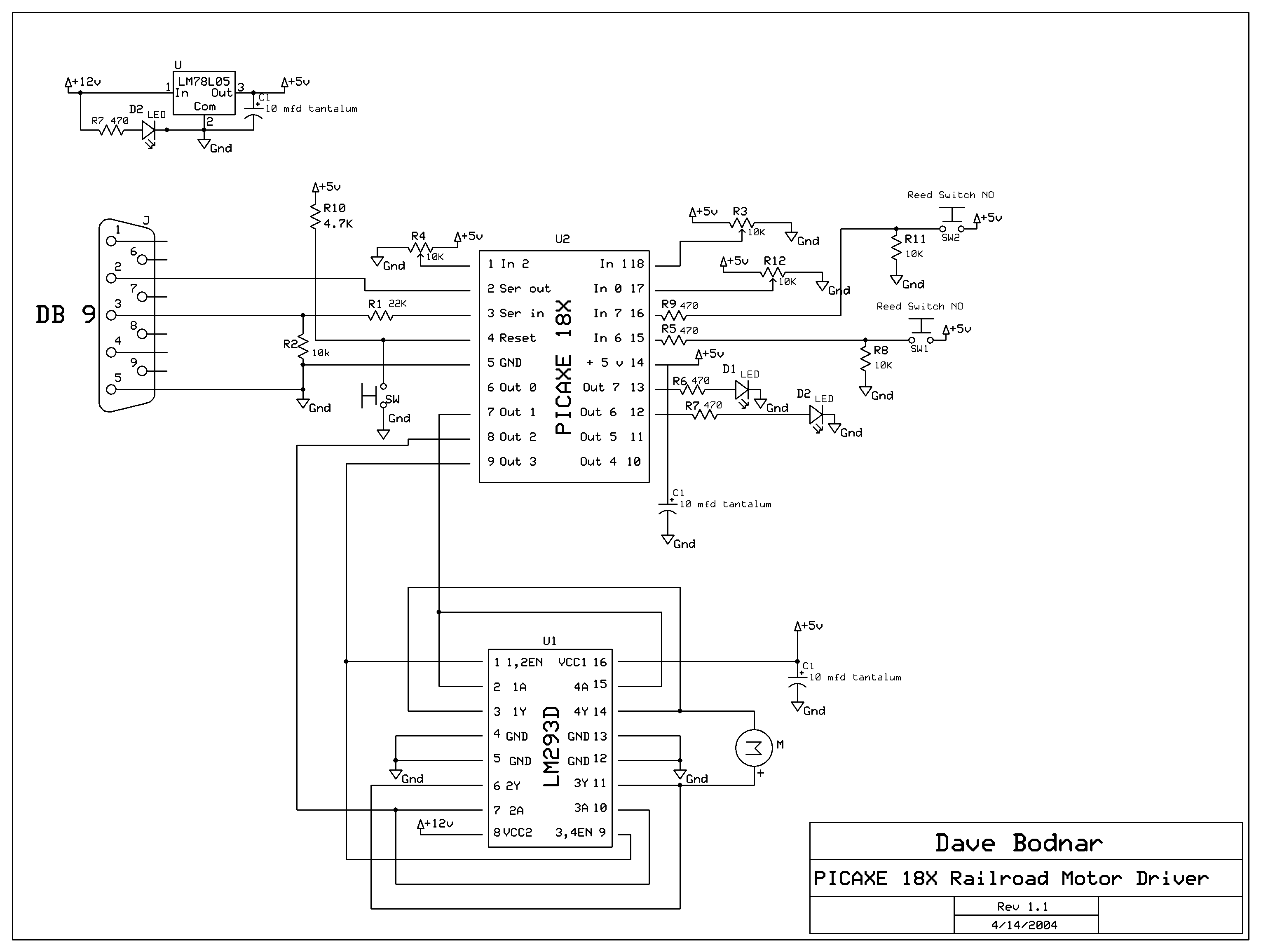
ring bell electronic circuit

This circuit generates an oscillating frequency of approximately 1 kHz, which can be adjusted by changing the value of resistor R1. The speaker will emit a continuous beep sound at this frequency.
The circuit utilizes a basic oscillator configuration, likely employing a 555 timer IC or a similar oscillator circuit. The frequency of oscillation is primarily determined by the resistor-capacitor (RC) timing network, where R1 and a capacitor (let's denote it as C1) set the time period of the oscillation. The output from the oscillator is connected to a speaker, which converts the electrical signal into audible sound waves.
In a typical configuration, the capacitor C1 is charged and discharged through R1, creating a square wave output at the frequency defined by the formula:
\[ f = \frac{1.44}{(R1 + 2R2) \cdot C1} \]
where R2 may also be present in the circuit to adjust the duty cycle of the output waveform. The speaker is connected to the output pin of the timer or oscillator, allowing it to produce sound at the specified frequency.
To modify the frequency of the output sound, one can change the resistance value of R1. Increasing R1 will lower the frequency, while decreasing R1 will raise the frequency. Additionally, variations in C1 will also affect the oscillation frequency, allowing for a wide range of sound frequencies to be produced.
This circuit is suitable for applications such as alarms, timers, or other sound signaling devices where an adjustable frequency output is required. Proper selection of components and values will ensure reliable operation and desired sound characteristics.This circuit produces oscillating frequency around 1kHz, and able to be converted by changing the value of resistor R1. The speaker will produce a long beep sound with 1kHz frequency. Here is the schematic : 🔗 External reference
The circuit utilizes a basic oscillator configuration, likely employing a 555 timer IC or a similar oscillator circuit. The frequency of oscillation is primarily determined by the resistor-capacitor (RC) timing network, where R1 and a capacitor (let's denote it as C1) set the time period of the oscillation. The output from the oscillator is connected to a speaker, which converts the electrical signal into audible sound waves.
In a typical configuration, the capacitor C1 is charged and discharged through R1, creating a square wave output at the frequency defined by the formula:
\[ f = \frac{1.44}{(R1 + 2R2) \cdot C1} \]
where R2 may also be present in the circuit to adjust the duty cycle of the output waveform. The speaker is connected to the output pin of the timer or oscillator, allowing it to produce sound at the specified frequency.
To modify the frequency of the output sound, one can change the resistance value of R1. Increasing R1 will lower the frequency, while decreasing R1 will raise the frequency. Additionally, variations in C1 will also affect the oscillation frequency, allowing for a wide range of sound frequencies to be produced.
This circuit is suitable for applications such as alarms, timers, or other sound signaling devices where an adjustable frequency output is required. Proper selection of components and values will ensure reliable operation and desired sound characteristics.This circuit produces oscillating frequency around 1kHz, and able to be converted by changing the value of resistor R1. The speaker will produce a long beep sound with 1kHz frequency. Here is the schematic : 🔗 External reference




